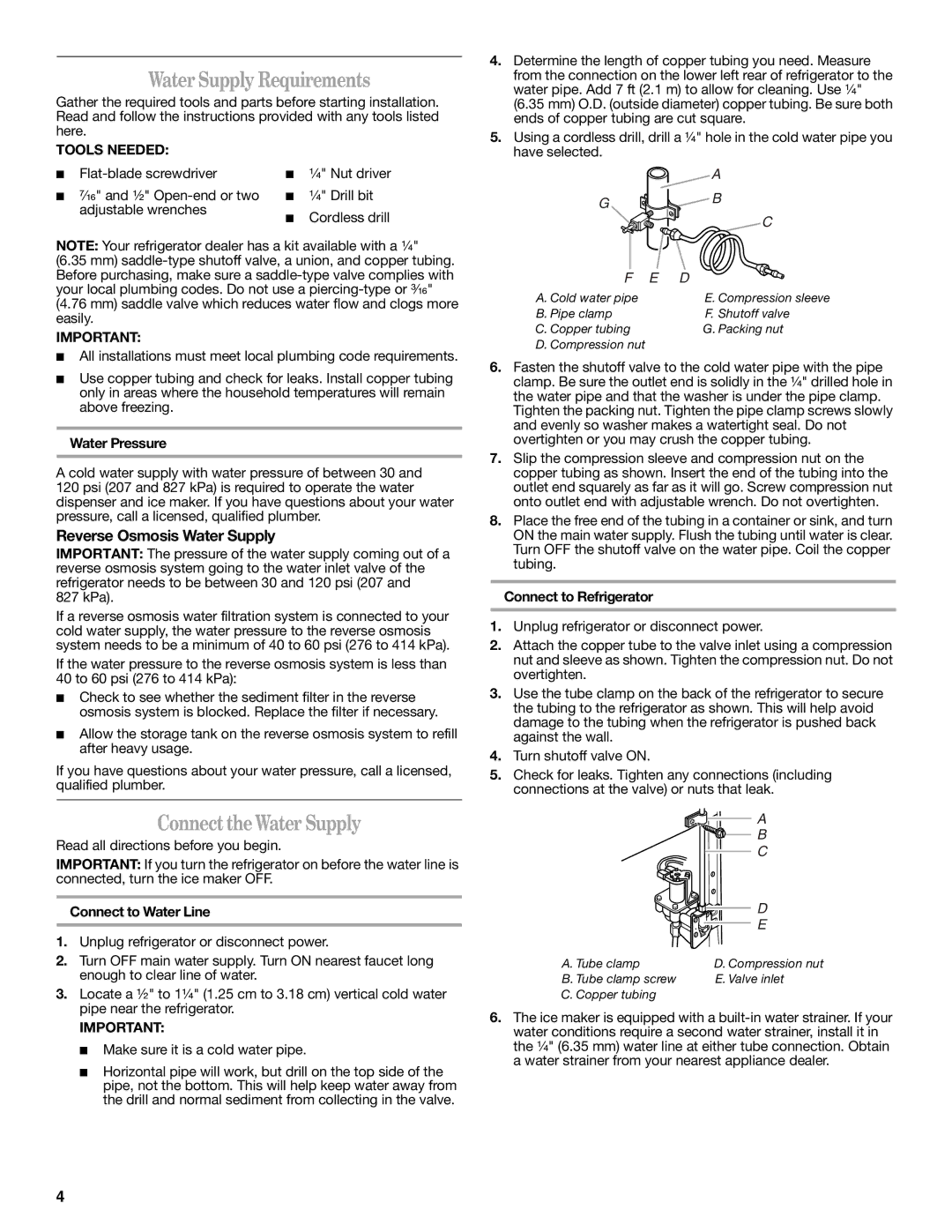W10249208A, W10249209A specifications
The Amana W10249209A and W10249208A are essential components for users seeking to maintain or enhance the performance of their refrigeration systems. These models are primarily recognized for their compatibility with various Amana refrigerators, playing a crucial role in ensuring optimal cooling efficiency.The W10249209A is the water filter model, designed to reduce a wide range of contaminants present in tap water, including chlorine, lead, and other harmful substances. By using an advanced filtration system, this model provides clean, great-tasting water for drinking and cooking. Its ability to offer clean water not only addresses health concerns but also improves the flavor of beverages and meals prepared using filtered water.
On the other hand, the W10249208A serves as a replacement for the internal ice maker. This component is vital for producing ice efficiently, allowing users to have a constant supply of ice for their beverages. The ice maker is designed with user convenience in mind, featuring easy installation and compatibility with various refrigerator models, which reduces the hassle often associated with replacing appliance parts.
Both models incorporate high-quality materials, ensuring durability and longevity. The filters can effectively last up to six months, depending on water quality and usage, making them a cost-effective solution for maintaining ice and water quality. Their design prioritizes user safety and environmental consciousness, reducing plastic waste and the need for bottled water.
Another significant characteristic of these components is their adherence to stringent safety and performance standards, including certification by NSF International. This certification validates their effectiveness in reducing specific contaminants, giving users peace of mind regarding the safety of their drinking water.
In terms of technology, both components feature innovative designs that facilitate easy installation and replacement. The user-friendly aspect is a considerable advantage, allowing homeowners to easily undertake maintenance without needing professional assistance.
In summary, the Amana W10249209A and W10249208A are indispensable parts of any Amana refrigerator, prioritizing water purity and efficient ice production. Their advanced technology, durable design, and easy maintainability make them ideal for users who value quality, convenience, and safety in their kitchen appliances. By integrating these models into their systems, users can significantly enhance the functionality and longevity of their refrigerators.

